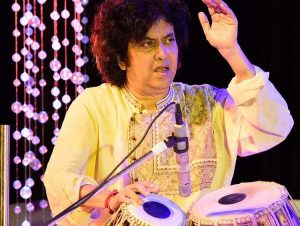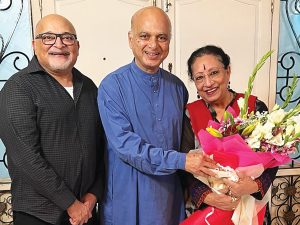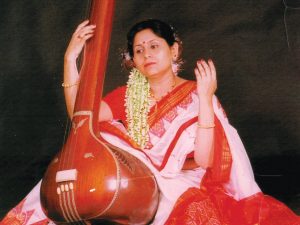
Alvida, Didi
By MOHAMED KHAKI
Lata Mangeshkar’s recent passing at the age of 92 was met with an outpouring of grief in India and in the diasporic South Asian communities, as well as in countries in the Middle East, Central Asia and East Africa.
The fact that her passing was from COVID-related illness added shock and poignancy at her death. Many have talked of feeling bereft, as if they had lost yet another family member during these fraught times.
As a recipient of the Bharat Ratna (Jewel of India), India’s highest civilian award, Didi (older sister, as she was affectionately called), was accorded a state funeral which was attended by luminaries of state and cinema, and the funeral was carried internationally on mainstream and social media.
Yet even the passing of this icon did not provide a respite from the divisive rhetoric that has come to characterize discourse in India today:
“Did Shah Rukh Khan spit after saying a Muslim prayer over her body?”
“Don’t the pictures of Lata with some regional and national leaders confirm her right-wing alliance?”
However, to borrow from Shakespeare, I have come to praise Lata, and not to bury with naysayers’ doubt and invective. Lata’s contribution to Indian music is much too big, and her achievements unassailable, for us to pay attention to “brutish beasts, and men (who) have lost their reason”.
Growing up in Tanzania, I found Lata’s songs to be like mother’s milk in giving me musical succor. Songs from films like Andaz (1949), Barsaat (1949), which predated my birth, and those from Baiju Bawra (1952) and Amar (1954), are the backdrop to my childhood memories. I distinctly remember seeing the film Mother India when it came out in the late 1950s, and its songs continue to thrill. Listening to Duniya mein hum aaye hain to jeena hi padega, after an especially frustrating day, can still provide a degree of (admittedly mawkish and self-pitying) comfort.
Lata gained popularity in the late 1940s, when playback singing became the norm in Indian cinema. In an article in the Economic and Political Weekly, Sanjay Srivastava argues that Lata ushered in a stylistic homogeneity, where previously there was a diversity of voices that was more reflective of the broader Indian culture.
When a bereft Meena Kumari sang Mohe bhool gaye saawariya in Baiju Bawra or a defiant Madhubala danced to Pyar kiya to darna kya in Mughal-e-Azam (1960), it was easy to forget that it was actually Lata’s voice that we were hearing; so firmly had her stature as the preeminent voice of the heroine become entrenched in our psyche.
Lata’s voice conveyed such sweetness and innocence that it made her sound like a young girl. Even the great classical singer Ustad Bade Ghulam Ali Khan saheb is reported to have commented on her tonal quality, the purity of her sur. If a music director (composer of a film’s score) was looking for an edgier voice, he (it was only in rare cases was a music director a she) went to her sister Asha Bhosle, with whom Lata reportedly had a fraught relationship.
In the 1950s and 60s, music directors like Madan Mohan, Sachin Dev Burman, Roshan and Naushad were at their best, as were lyricists like Shakeel Badayuni, Anand Bakshi, Sahir Ludhianvi and Shailendra, to name a few. I am convinced that the beauty of Lata’s voice inspired these masters to even greater achievements.
The term Bollywood was coined around the early 1970s when Hindi films became more formulaic, and film music took on a different sound – one that had a “modern”, jazzier flavour. By this time many musical greats of Indian cinema had passed away, and some had been sidelined. However, Lata made the transition relatively unscathed, and she continued to sing for actors who were young enough to be her daughters.
Ironically, it was R.D. Burman, S.D.’s son and music assistant, who was at the forefront of that era’s transition to the new vibe. Compare Lata’s Jab tak hai jaan jaane jahan, from 1975’s top-grossing film Sholay, to her O basanti pawan pagal from Jis Desh Mein Ganga Behti Hai and one will understand the change in the orchestration, and style of music in just a decade.
Live performances in front of rapturous crowds in the 1970s helped burnish Lata’s halo. At her overseas debut at London’s prestigious Royal Albert Hall in 1974, she was introduced by the film actor Dilip Kumar who was her equal in stature as a Bollywood star.
The first of Lata’s three performances in Toronto was at Maple Leaf Gardens in 1975 – not exactly the classiest of venues, but one that could facilitate the maximum number of her adoring fans. The audience, resplendent in their saris and suits, was likely the best dressed and least rowdy crowd at the venue until then, and likely since.
Lata’s ability to sing in many languages further endeared her to audiences. One can even find clips on YouTube of her singing the Kiswahili song Malaika in Nairobi and You Needed Me in Toronto.
Lata would typically start her live performances with verses from the Bhagvad Gita. In my opinion, she was at her best singing devotional music. Her recordings of chapters 9, 12 and 15 of the Gita are truly exquisite, as are her Meera bhajans; music for all these recordings was composed by her brother Hridaynath. To this day her bhajans like Banwaari re or Allah tero naam, Ishwar tero naam remain among my favourites.
Lata was popular even with the younger generation. YouTube is full of clips of contestants singing her songs on shows such as Indian Idol. It is fascinating to watch judges react with “Wah wah!” and “Kya baat hai!” when an aspiring young singer is able to nail the murkis, meends or gamaks, little ornamental fragments, that Lata’s singing was replete with.
Many have commented on Lata Mangeshkar’s singing as being divinely inspired, and she was often called Saraswati, the goddess of music in Hindu belief. Her passing away the day after Saraswati Puja, the day when the goddess is celebrated, was perhaps a divine coincidence.
Lata’s song from Mamta (1966) will prove to be prophetic: Rahein na rahein hum, mehka karenge – whether I am here or not, my fragrance will remain. There is little doubt that Didi’s songs will be remembered by generations to come.
Caption for Photo Above: When Lata Mangeshkar came to Toronto…This image was shot by Durga Pachapurkar, a long time Raag-Mala patron. She was the President of Marathi Bhashik Mandal and attended a reception at Queen’s Park for Lata Mangeshkar held by the then Lieutenant Governor of Ontario.
 Previous Post
Previous Post Next Post
Next Post





